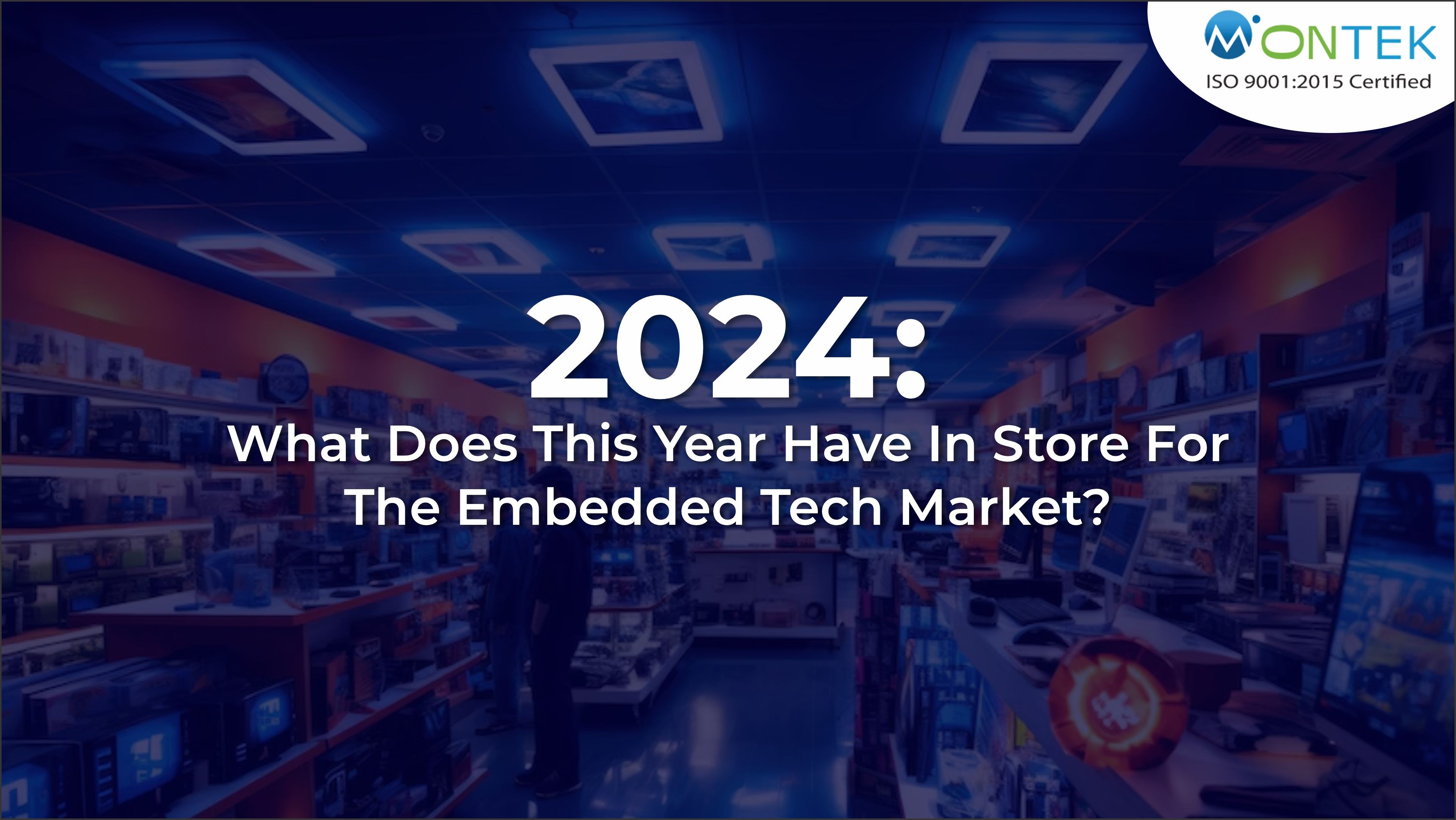
21
May2024 What Does This Year Have in Store for the Embedded Tech Market
As we move further into 2024, the embedded technology market is poised for significant advancements and transformative changes. This sector, which lies at the heart of various industries ranging from consumer electronics to industrial automation, is seeing rapid growth driven by several key trends and technological innovations. This blog delves into what 2024 holds for the embedded tech market, highlighting major trends, emerging technologies, and potential challenges.
1. Proliferation of IoT Devices
One of the most prominent trends in 2024 is the continued proliferation of Internet of Things (IoT) devices. According to a report by IDC, the number of connected devices is expected to exceed 30 billion by the end of the year (blog.google). This explosion of IoT devices is driving demand for more sophisticated and efficient embedded systems. Manufacturers are focusing on developing low-power, high-performance microcontrollers and sensors that can support a wide range of applications from smart homes to industrial IoT (IIoT).
Embedded systems are becoming more integral in managing these IoT devices, providing the necessary processing power, connectivity, and security. Companies like Arm and Intel are leading the charge with their latest microcontroller units (MCUs) and system-on-chip (SoC) designs that integrate advanced functionalities such as machine learning capabilities and enhanced security features.
2. Advancements in AI and Machine Learning
Artificial Intelligence (AI) and Machine Learning (ML) are no longer confined to cloud computing; they are now being embedded directly into devices. This trend, often referred to as edge AI, enables faster decision-making and reduces latency by processing data locally rather than in a distant cloud server. In 2024, we are witnessing significant advancements in this area.
NVIDIA's Jetson platform, for instance, continues to evolve, offering powerful AI capabilities in compact, power-efficient form factors suitable for robotics, drones, and smart cameras (Google DeepMind). Similarly, companies like Google and Apple are integrating AI capabilities into their embedded systems for more personalized and intelligent user experiences.
3. Rise of 5G and Its Impact
The rollout of 5G networks is another critical factor shaping the embedded tech market. With its promise of ultra-fast connectivity and low latency, 5G is set to revolutionize industries such as automotive, healthcare, and manufacturing. Embedded systems will play a crucial role in harnessing the potential of 5G, enabling real-time data processing and enhanced communication capabilities.
Automotive applications, such as autonomous driving and advanced driver-assistance systems (ADAS), are particularly poised to benefit from 5G. Embedded systems in vehicles will rely on 5G for real-time data exchange between vehicles (V2V) and with infrastructure (V2I), significantly improving safety and efficiency.
4. Enhanced Security Measures
As embedded systems become more widespread and integral to critical infrastructure, security has become a paramount concern. The increasing number of cyber-attacks targeting embedded devices underscores the need for robust security measures. In 2024, there is a strong focus on enhancing the security of embedded systems through both hardware and software solutions.
Trusted Platform Module (TPM) technology is being widely adopted to provide hardware-based security. Additionally, secure boot processes and end-to-end encryption are becoming standard practices. Companies are also investing in AI-driven security solutions that can detect and respond to threats in real-time.
5. Sustainability and Energy Efficiency
Sustainability is another major theme in 2024. As the world grapples with climate change, there is an increasing emphasis on developing energy-efficient and sustainable technologies. The embedded tech market is no exception. Companies are designing embedded systems that consume less power and contribute to reducing the overall carbon footprint.
Technologies such as energy-harvesting sensors and ultra-low-power MCUs are gaining traction. These innovations not only extend the battery life of IoT devices but also enable the deployment of sensors in remote and hard-to-reach areas where frequent battery replacement is impractical.
6. Growth in Wearable Technology
Wearable technology continues to grow, with new applications emerging in healthcare, fitness, and entertainment. Embedded systems are at the core of these devices, providing the necessary processing power, connectivity, and data management capabilities. In 2024, we expect to see more sophisticated wearables that offer advanced health monitoring, augmented reality (AR) experiences, and seamless connectivity.
For example, smartwatches are evolving from simple fitness trackers to comprehensive health monitoring devices capable of tracking vital signs, detecting abnormalities, and even predicting health issues before they arise. This evolution is made possible by advancements in embedded technology, including more powerful processors and sophisticated sensor integration.
7. Challenges and Future Outlook
While the future of the embedded tech market looks promising, it is not without challenges. One of the primary concerns is the shortage of semiconductors, which has been a significant issue since the COVID-19 pandemic disrupted global supply chains. This shortage impacts the production of embedded systems and IoT devices, leading to delays and increased costs.
Additionally, the rapid pace of technological advancement requires continuous upskilling of the workforce. There is a growing demand for professionals skilled in embedded systems design, AI, cybersecurity, and 5G technologies. Addressing this skills gap is crucial for the sustained growth of the market.
Despite these challenges, the embedded tech market is on a robust growth trajectory. The integration of AI, the expansion of IoT, the advent of 5G, and the focus on sustainability and security are driving innovation and opening up new opportunities. As we progress through 2024, the embedded tech market is set to play a pivotal role in shaping the future of technology across various sectors.
Conclusion
The year 2024 is shaping up to be a transformative one for the embedded tech market. With advancements in AI, the proliferation of IoT devices, the rollout of 5G, and a heightened focus on security and sustainability, the industry is poised for significant growth and innovation. Companies and developers in this space must stay abreast of these trends and challenges to leverage the full potential of embedded technology.
The future of embedded tech is not just about making devices smarter and more connected; it's about creating solutions that are efficient, secure, and sustainable. As these technologies continue to evolve, they will undoubtedly redefine how we interact with the world around us, making 2024 a landmark year for embedded systems and the broader technology landscape.
Author -

Sr. Software Engineer

